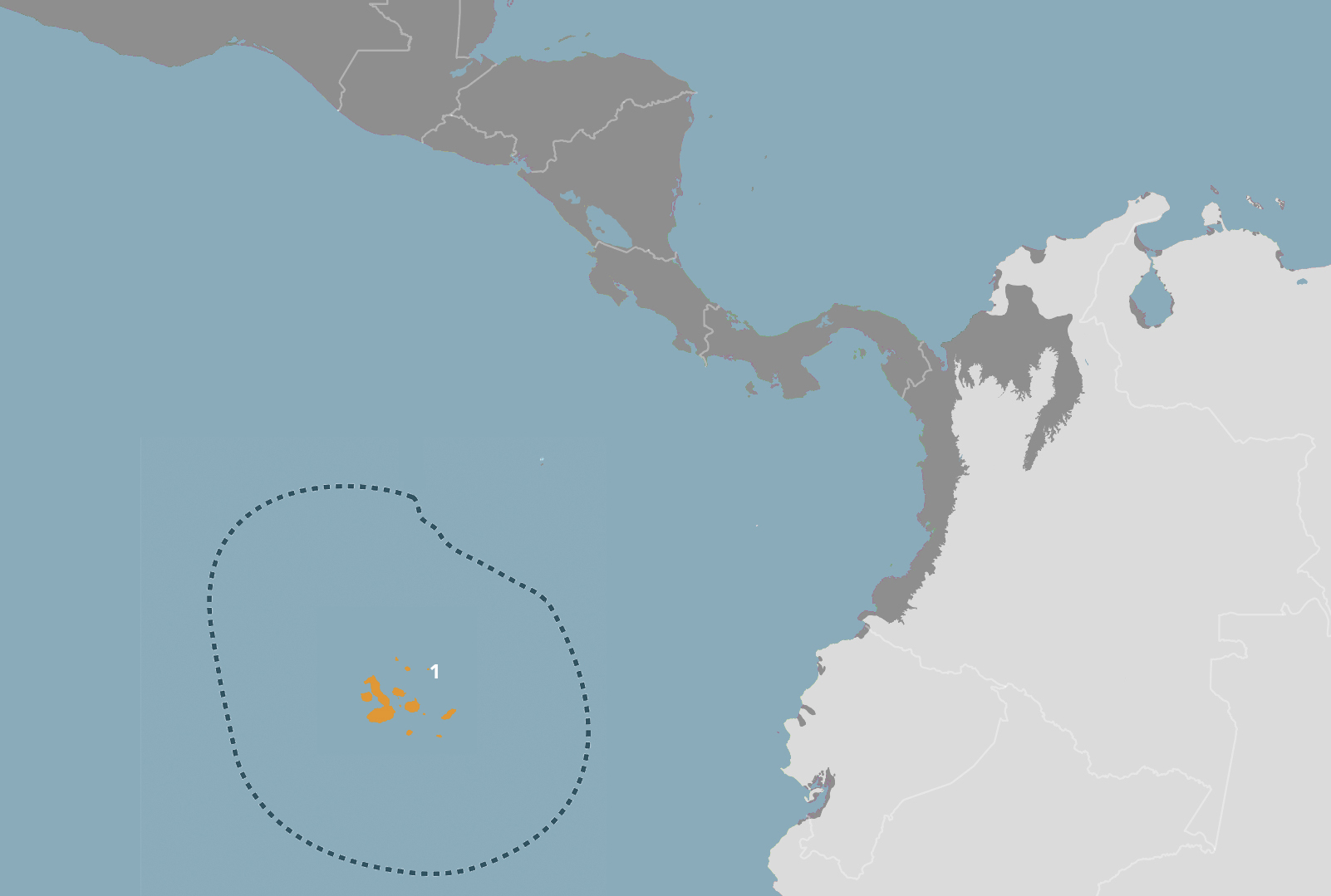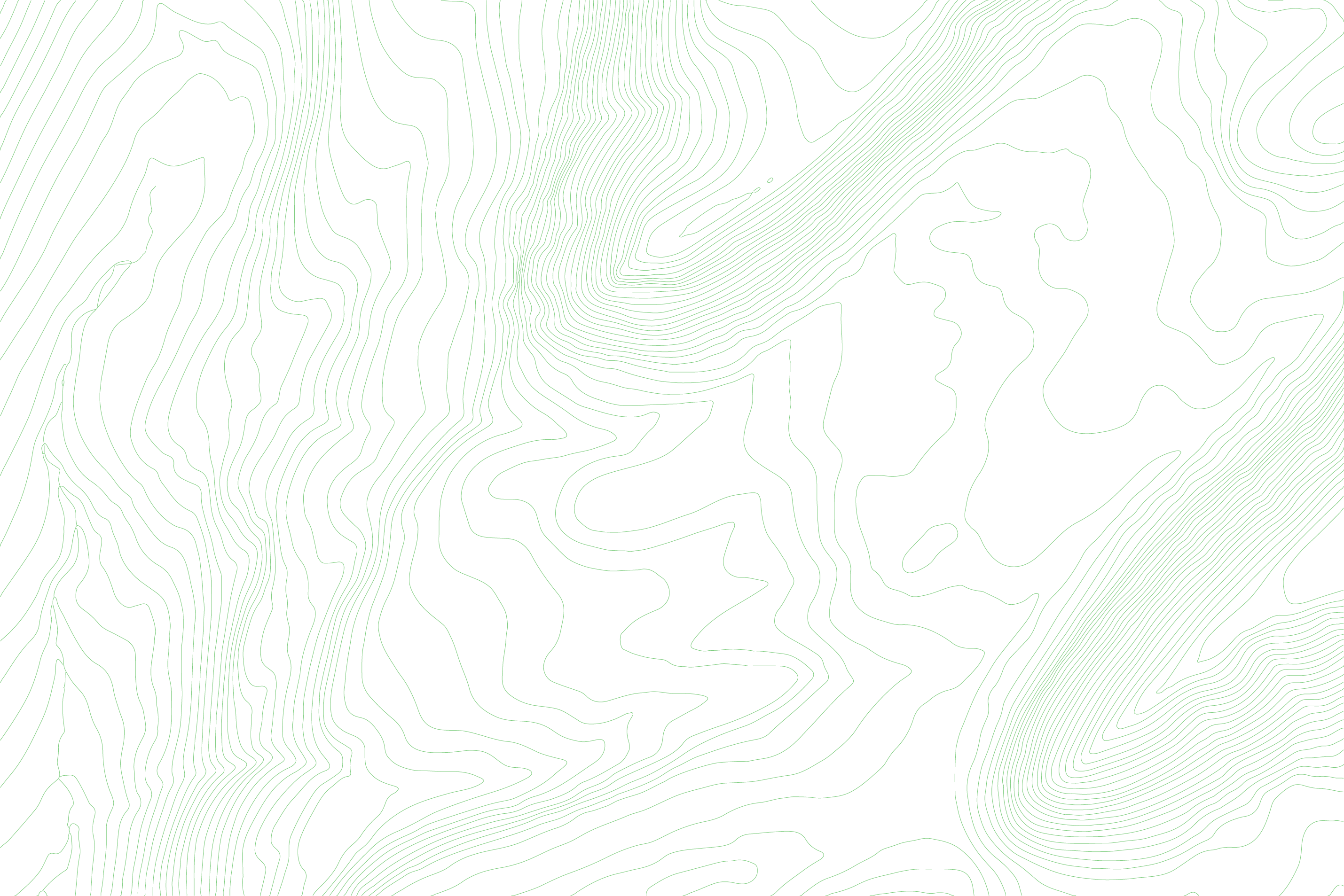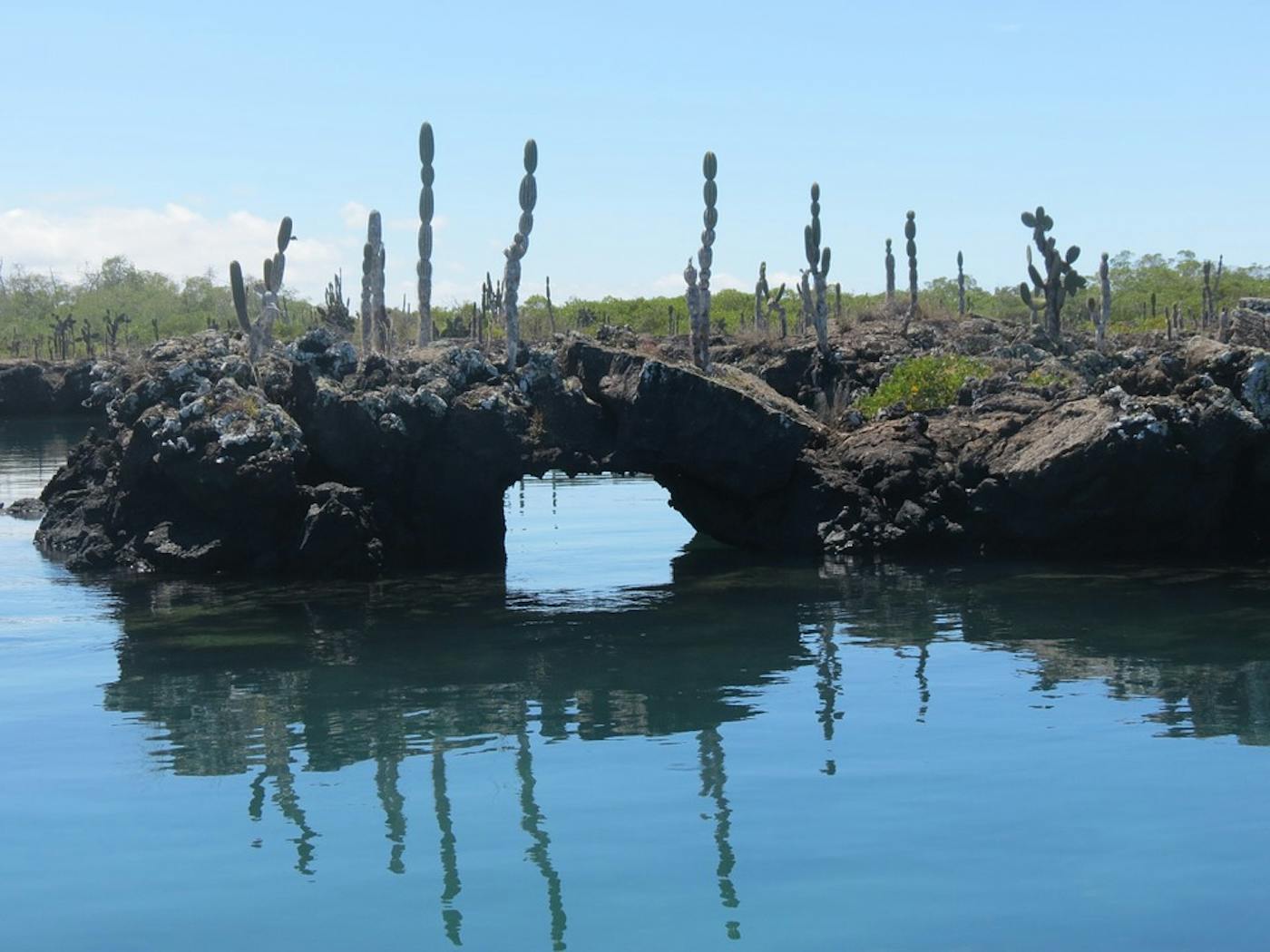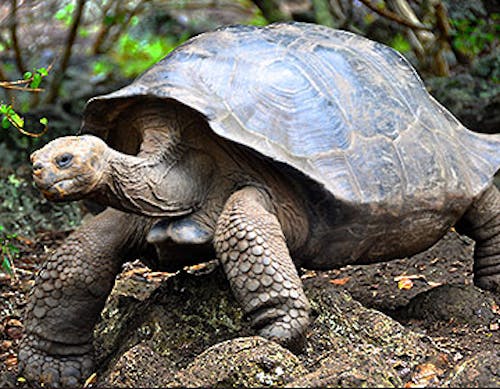Galápagos Islands bioregion
The bioregion’s land area is provided in units of 1,000 hectares. The conservation target is the combined Global Safety Net (GSN1) areas for the component ecoregions. The protection level indicates the percentage of the GSN goal that is currently protected on a scale of 0-10. N/A means data is not available at this time.
The Galapagos bioregion, located in the Southern America (Neotropical) realm, contains an archipelago of 61 volcanic islands and islands 520 nautical miles off the coast of Ecuador. With its array of plant, animal and marine species, the Galapagos have been listed as a UNESCO heritage site and was the inspiration for Darwin’s theory of evolution. The islands are home to 20 endemic reptiles and the famous Giant Tortoise. The marine biodiversity is equally rich with 20% of species endemic to the region. The bioregion is dominated by one ecoregion – Galápagos Islands Xeric Scrub (601) – but this belies the diversity of plant life present here, with over 500 native plant species, 180 of which are endemic. The land area of this bioregion is approximately 800,000 hectares.

The Galápagos Islands bioregion is part of the Andes & Pacific Coast subrealm and is made up of one ecoregion: (1) Galápagos Islands Xeric Scrub.
Learn more about the Galápagos Islands ecoregion below.

Explore the Bioregions
Want to learn more about the fascinating species, diverse ecosystems, and natural wonders of the Earth? Click the button below to launch One Earth's interactive navigator and discover your Bioregion!
LAUNCH NAVIGATOR

